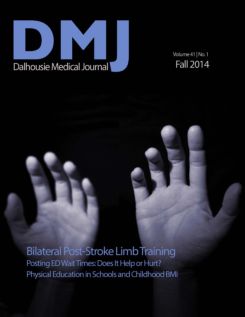Bilateral arm training in the chronic phase of stroke rehabilitation: a systematic review and meta-analysis
DOI:
https://doi.org/10.15273/dmj.Vol41No1.5439Abstract
Objective: Bilateral arm training (BAT) is an intervention utilized in rehabilitating upper-extremity paresis. The objective of this study was to conduct a systematic review and meta-analysis on the evidence for BAT on upperlimb paresis in the chronic phase of stroke.Methods: A literature search of multiple databases (MEDLINE, CINAHL, EMBASE, PsycINFO, Cochrane Central Register of Controlled Trials, OT Seeker ) was conducted for relevant randomized controlled trials (RCTs) published in the English language that met inclusion criteria. Studies must have included BAT as part of treatment and participants must have been ’‰¥6 months post stroke. Methodological quality of each study was assessed using the PEDro scale (maximum score=10).
Results: Eight RCTs satisfied the inclusion criteria (PEDro scores 1-7) for a total pooled sample size of 131 subjects (88 males and 43 females). The mean age of subjects was 57.6±4.1 years (range 50.7-64.8 years) and the mean time since stroke was 43.8±34.8 months (range 13.9-114.0 months). Among study endpoints, only the Fugl-Meyer Assessment tool showed significant improvement in motor impairment whereby the BAT groups improved, on average, 3.77 points whereas the control group improved just 1.23 points (Difference of Means = 1.46±0.662; p=0.028).
Conclusion: Overall, BAT showed a general trend in improvement over standard therapy, although it was not statistically significant. Future studies with improved methodological quality (e.g., strict inclusion criteria, protocol standardization) and larger sample sizes are needed to appropriately assess the benefit of BAT in stroke patients.
Downloads
How to Cite
Mays, R., McIntyre, A., Kwok, C., & Teasell, R. (2015). Bilateral arm training in the chronic phase of stroke rehabilitation: a systematic review and meta-analysis. DALHOUSIE MEDICAL JOURNAL, 41(1). https://doi.org/10.15273/dmj.Vol41No1.5439
Issue
Section
Review
License
Authors who publish with this journal agree to the following terms:
- Authors retain copyright and grant the journal right of first publication with the work simultaneously licensed under a Creative Commons Attribution License that allows others to share the work with an acknowledgement of the work's authorship and initial publication in this journal.
- Authors are able to enter into separate, additional contractual arrangements for the non-exclusive distribution of the journal's published version of the work (e.g., post it to an institutional repository or publish it in a book), with an acknowledgement of its initial publication in this journal.
- Authors are permitted and encouraged to post their work online (e.g., in institutional repositories or on their website) prior to and during the submission process, as it can lead to productive exchanges, as well as earlier and greater citation of published work (See The Effect of Open Access).


